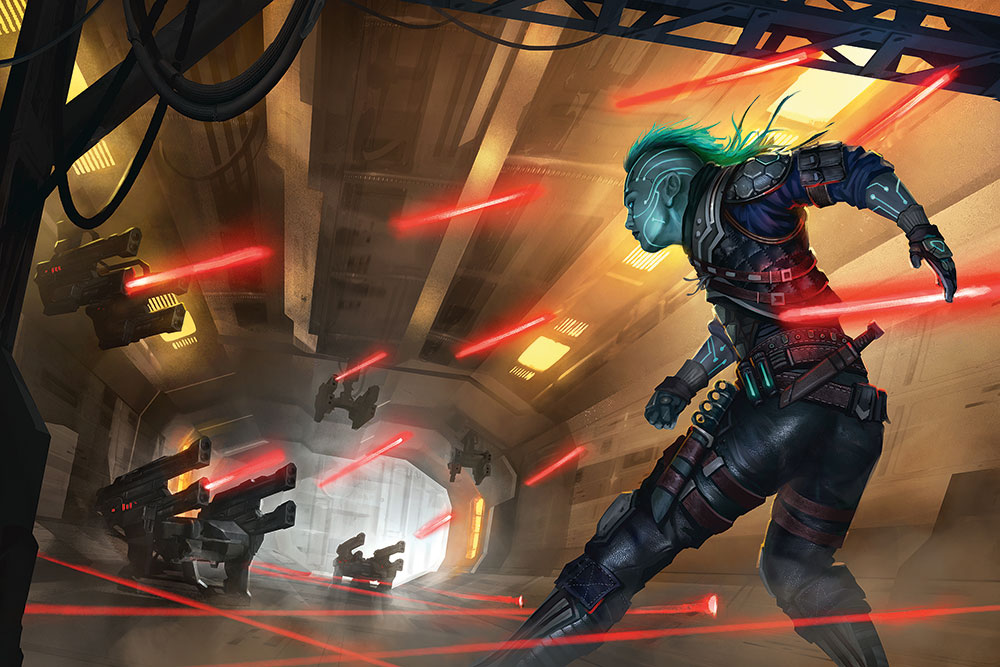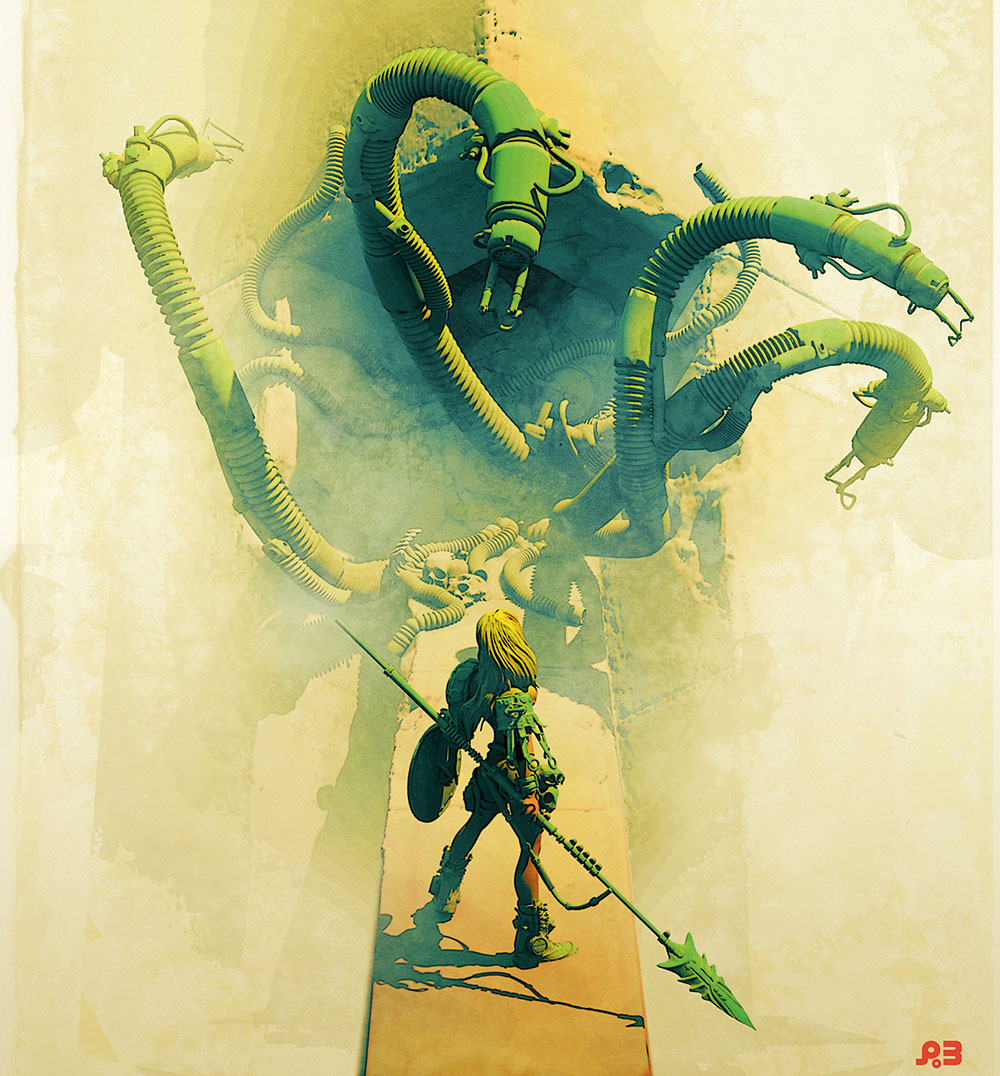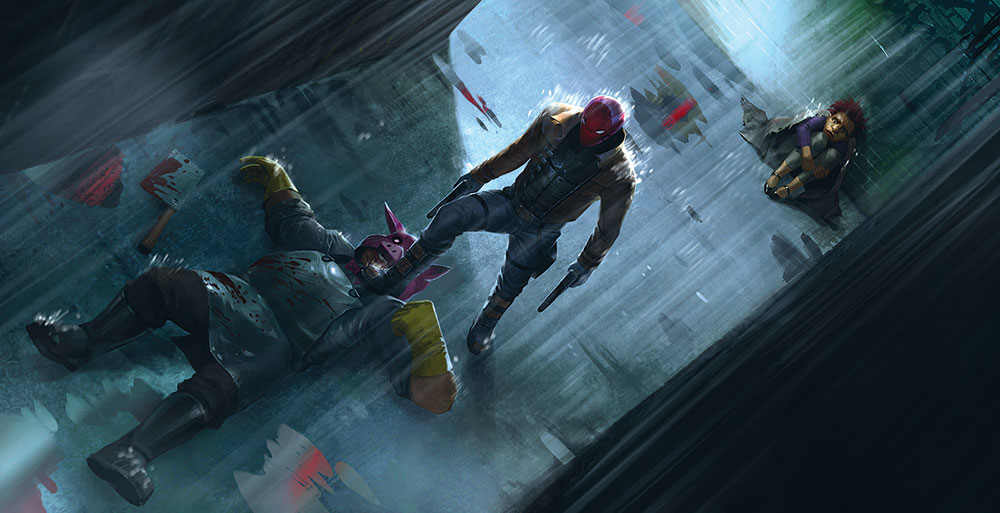How to give and get more from art critiques
One of the most important ways to improve as an artist is by having your work critiqued. Sometimes you have no choice: as a student, you're critiqued by your tutor; as an employee, by your creative director. At other times, you'll seek out a critique. Either way, it's a great way to get insight into how to improve.
There's just one problem. We're all human and no one likes to be criticised. "Working as an illustrator and concept artist, you always dread the moment where you show the work," admits Loïc Zimmermann, who's an art director at MPC and a teacher at Gnomon. "We all want the tap on the back."
But hiding would be a big mistake. "Peer feedback for both personal and professional work is invaluable, because everyone loses perspective on their own work – both in general and on each piece as they work on it," says Drew Whitmore, a principal artist at Atomhawk. "Getting that outside context gives you a route to seeing your work with clearer eyes."
Loïc agrees. "Learning to accept criticism will make you a better artist; you just have to learn not to take it personally," he stresses. "Nobody's going to hire someone who throws a tantrum each time points are raised, however talented they are."

So what can you to do if critiques make you overemotional? In that case, you actually need to get critiqued more often, Drew suggests. "If you're too precious about your artwork and don't get a lot of feedback, that feedback is going to hurt if it's something you feel strongly about," he reasons. "You have to build up those calluses."
See the crit for what it is
It's also important to take a step back and empathise with the person giving the critique. "Getting a rough crit can feel like a personal attack, simply because you'd put so much of your time, energy, and emotion into creating the work," says US artist Daniel Warren.
"But if someone cares enough to give you a well thought-out critique in the first place, then it means they're invested in your improvement and care enough to help you grow. So see this for what it is: help from a person who's probably dealing with the same things that you are."
Daily design news, reviews, how-tos and more, as picked by the editors.
In short, while a critique can often feel like criticism, they're not the same thing. Criticism is often purely based on subjective, personal opinion – whether someone likes your work or not. In contrast, a critique should be purely objective and address one central question: does the piece achieve what the artist has set out to create?
"Lots of artists tend to mix up criticism with an opinion on the quality of their work and their value as an artist," says French art director and freelancer Pascal Blanché. "But a critique isn't about you. It's a process that aims to improve the final version of your art. Once you recognise this, you can start to help and guide the person who is critiquing your work by discussing the issue and keeping an open mind."

And note that 'discussing' doesn't mean 'arguing': this is not a zero-sum debate, but a process of constructive dialogue. That's the spirit in which Sarah Robinson, creative director for Paizo in Seattle, approaches receiving a critique.
"I usually let them happen calmly," she says. "I may not agree with them, but in that case I'll just go ahead and make the requested changes to let them see how it would look, and explain to them why it wouldn't work."
Above all, you should never feel singled out, because receiving a critique is something every artist has to go through. "All visual medium is open for criticism," Sarah stresses. "It's going to happen, so if you can't take it then maybe you're in the wrong business." And the pay-off is that you can use the feedback positively, to improve your art.
Jumping board
How you do that will vary in different situations, says Drew. "But generally, you can either implement the suggestions, or use their critique as a jumping board for being analytical about your image," he says.
"Even if there are bits of a critique that I don't agree with, there's probably still something there to resolve. So I try to see if there are other routes to solving those issues, other than the suggested one, that will still retain what I liked previously."

Most importantly, never stop asking for critiques, because without them, your art is likely to stagnate, says Loïc. "I've done this job long enough that I have passionate people coming in, fresh out of school, who join and slowly fade over the years," he says.
"It seems like there's a layer of dust on them, and the flame, the fire in the eyes, just fades. And this is why you need to keep a critical thinking on your own work, and show it to the people who'll help you get better."
And there's no such thing as an artist who's too successful to ask for a critique. "Some of the best people I know ask for opinions," Loïc points out. "You wouldn't expect Jeremy Mann to tell you, 'Hey, what do you think of that painting?', but he does, because he's curious. The most established people, the strongest ones, still want to know."
Giving something back
As well as receiving critiques, as a professional artist you're often asked to critique other artists' work. But as we've already noted, no one likes hearing negative views of their art. So how do you go about it?
While diplomacy is key, soft-soaping the truth is not an option, says Sarah Robinson, who regularly reviews other artists' work at conventions. "Hearing the truth is what helps," she points out. "We all want to get better, and if we're told that we're awesome all the time, then there's no chance of going to the next level."

Dave Rapoza, an artist for games and films who's just launched his own comic entitled Steve Lichman, agrees. "You don't do anyone a service by holding back," he says. "People are looking for someone to be honest. Remember, they're asking for critique. If they want compliments instead, they need to make that clear."
Neither, though, should you simply spit out your own personal views of the work, says Loïc Zimmermann. "It's not about you and whether you like the art or not. That's not relevant," he explains. "It's about what is the artist trying to do, and how well they're working towards that goal."
"A critique requires you to do more than just look at the art; it's about understanding the ambitions behind it," agrees American artist Daniel Warren, who's recently been working with Dave Rapoza on Steve Lichman. Daniel used to critique artists regularly online via Livestream and Twitch, and still does so for those who reach out via email.
"I typically try to first identify what field they're trying to get into," he explains. "Concept art? Book illustration? Comics? And then I frame the crit around the needs and requirements of getting into that field."
This way, there's a better chance of your critique hitting home, he adds. "It shows them that you actually took the time to observe their work and aren't just giving them the boilerplate responses you give to everyone who asks for help."
Give yourself time to reply
Drew Whitmore agrees that taking your time is key. "Don't immediately jump into critique," he advises. "Looking at their image a couple of times, with some time in between, gives you a better view of what the issues are," he advises. And try to be constructive rather than just narrowly critical.
"Always try to have a proposed solution," Drew stresses. "Point out what you think is wrong and why, and then what you think they should do about it. If you don't have a solution off-hand, it's good to discuss it with the artist, and ask them a bunch of questions. Often, they'll think of a good solution themselves."

To make sure you don't slide too far into negativity, Daniel recommends the 'crit sandwich'. "The formula is 'positive, negative, positive'," he explains. "It's very important to remember that critique is not just negatives. Identifying what works, and the strengths, is equally important.
So, for every two areas of weakness, try to find an area of strength. For example: 'The anatomy could use some work; specifically the proportions in the arms. The costume design is really great, though – it's unique and makes the character pop. Maybe bump up the lighting so that it showcases the outfit more.'"
Agreeing on crit limits
Loïc adds that it's important from the outset to clarify with the artist exactly how open they are to criticism of their work. "So I usually ask: 'How far do you want me to go? Are you done with it and are asking politely, but ultimately you don't want to change a thing? Or this is something that you really want to improve?' I think that's a good place to start."
Bear in mind that there's no 'right' answer here: yours is a second opinion, not the be-all and end-all. "Apart from the low-hanging fruit around fundamentals, such as perspective, anatomy and lighting, a lot of stuff is very subjective," points out Drew. "With client work it gets easier because, hopefully, there's a clear direction coming from the client.
"With personal work, though, you need to consider where the artist is wanting to go. You can refer to other creatives who are successful at the thing this particular artist is trying to do as a jumping board for your feedback, so they know you're not trying to take them some place they don't want to go."
Think big, not small
It's important, too, to not get bogged down in details, says Daniel. "Stick to the three main problems you see in the work rather than overwhelm the person with every little thing you believe is wrong," he advises. "This serves to make the artist you're critiquing focus on the big, important issues and keeps them focused."

Above all, remember you're talking to a human being, so address them in the same friendly manner you'd like to be addressed yourself. "It's not just about what you say, but how you say it," says Dave. "The important thing is to convey why something isn't working and how to improve it; you don't have to be nasty about it. It's basically balance between the two people; both need to be sensitive to each other."
And Loïc is a great believer in a lightness of touch. "I think humour is something that works for everything in life," he says. "I start my class with anecdotes every time; it's like a way in. And you have to talk passionately about the good stuff. Then it's easier to say to them: 'So here, why did you screw it up? These parts are a very interesting direction, but you need to follow it the entire way through.'"
This article was originally published in issues 155 and 156 of ImagineFX, the world's best-selling magazine for digital artists. Subscribe to ImagineFX here.
Related articles:

Tom May is an award-winning journalist specialising in art, design, photography and technology. His latest book, The 50 Greatest Designers (Arcturus Publishing), was published this June. He's also author of Great TED Talks: Creativity (Pavilion Books). Tom was previously editor of Professional Photography magazine, associate editor at Creative Bloq, and deputy editor at net magazine.
